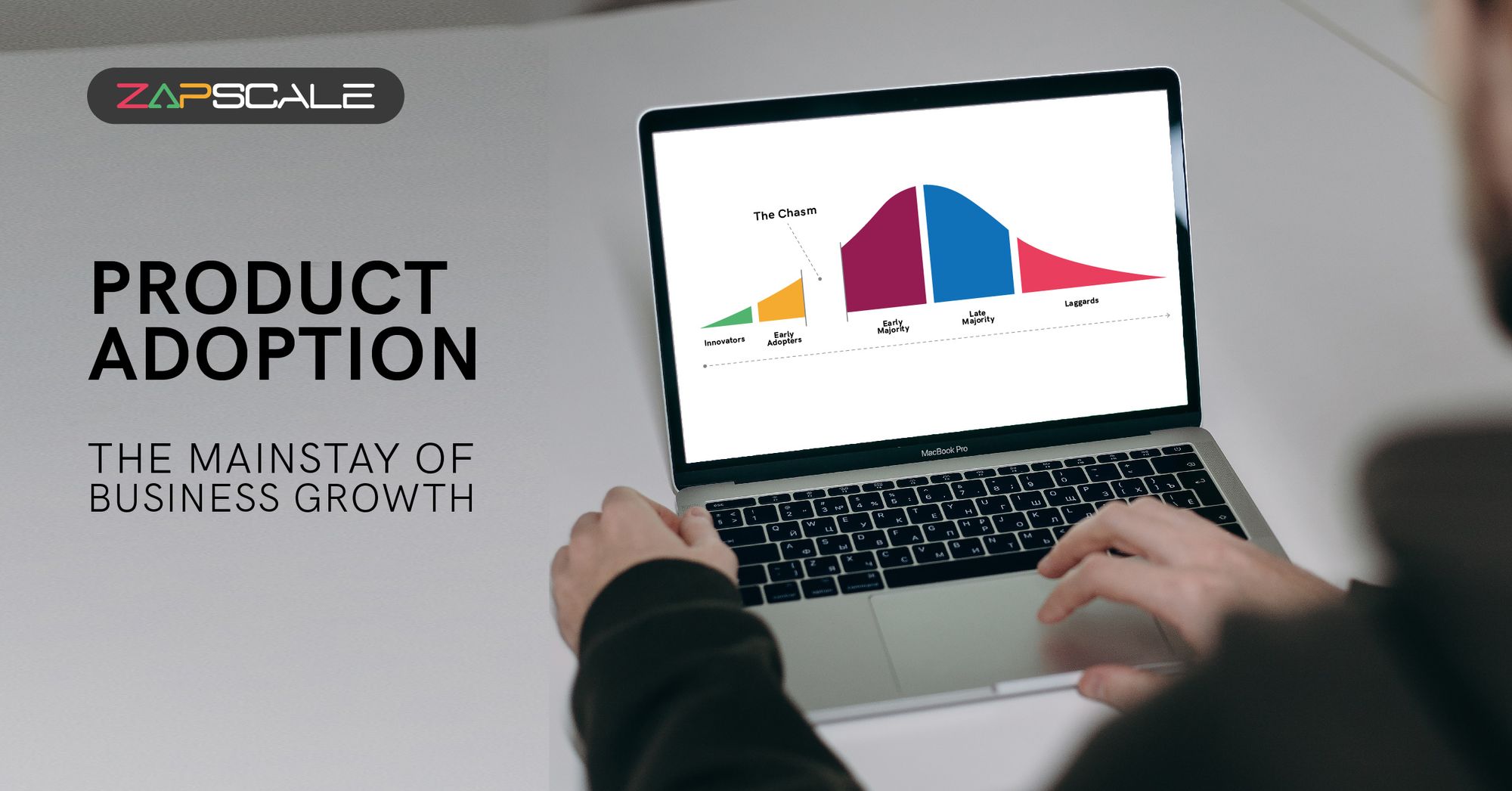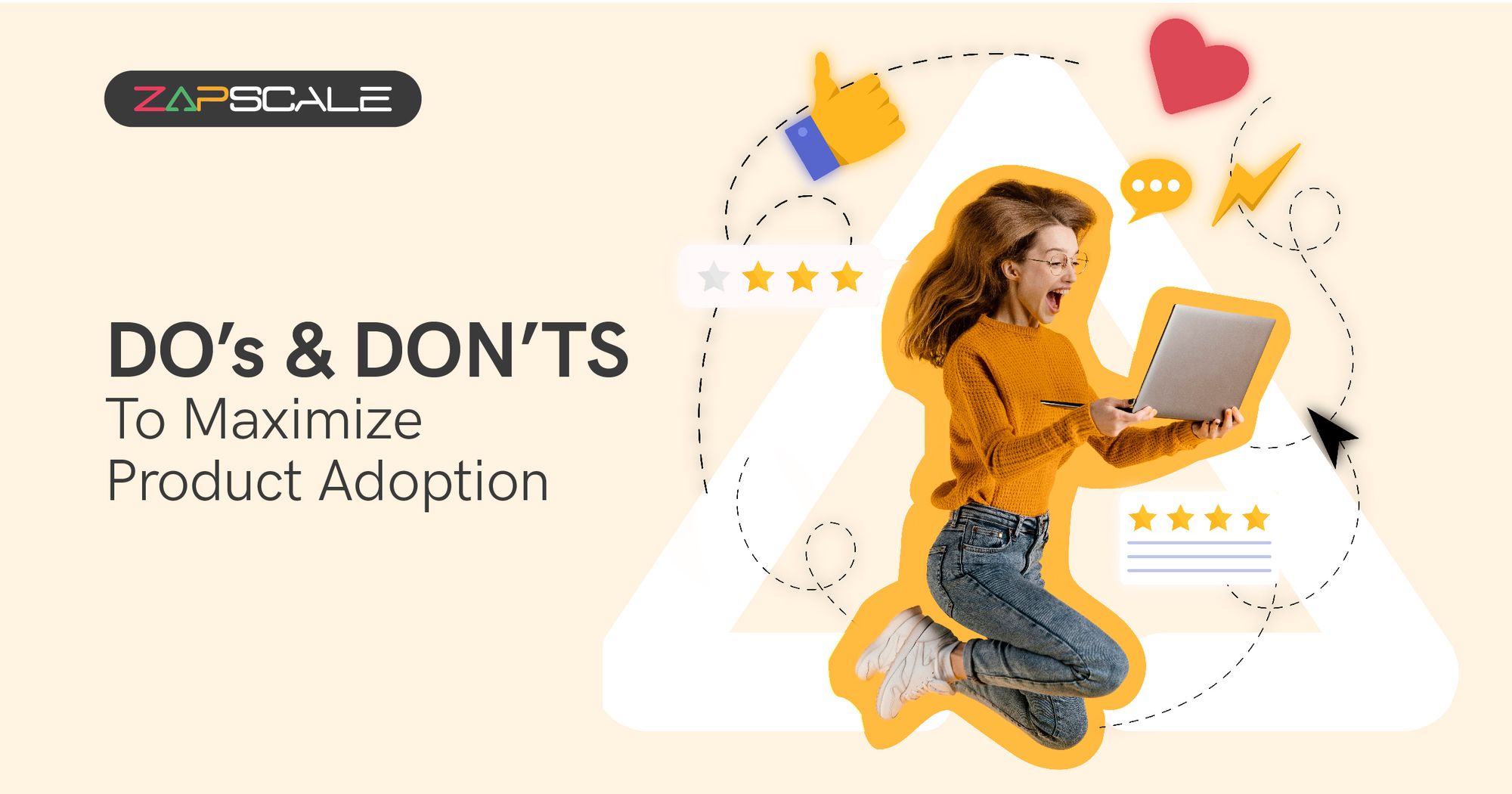CATEGORY > Product Adoption
What is Product Adoption? Why is it important for SaaS?

- Tim Cook
A failure to gain acceptance among the target audience is the most dreaded scenario one could imagine, right?
The success or failure of a product in the market depends on its level of adoption. Customers are more likely to stick with a business if they experience ease in using a product to derive the desired outcome. This starts a positive feedback loop leading to sustained growth and profitability. Thus it's critical to market the product effectively and promote broad adoption.
The widespread use of cloud-based email services like Gmail or Microsoft Outlook is a perfect example of effective product adoption. The standard on-premise email systems have been replaced by these services, being widely used over the years by both individuals & organizations. Convenience, accessibility, cost, and better features including higher storage capacity and advanced security measures contributed to the widespread acceptance of these services. As a result, the market for cloud-based email expanded tremendously, and more people started using these services on a day-to-day basis.
For a SaaS business, the adoption of a product has a direct impact on revenue and growth because they rely on a consistent flow of recurring revenue from its customers.
The primary spheres that product adoption impacts include:
- User engagement
- User retention
- User performance and productivity
- User experience
- Brand perception
- Product utilization
For the successful adoption of your product, it is important to focus on various aspects besides just your product. Here are a few:
✅ Customer Onboarding
Like your first date, don't sour the deal. The onboarding process of new customers should be smooth and fast so they can experience your product without any glitches.
✅ Training
You need to have a complete plan and schedule training sessions with your customer so that they can maximize the value of your product. But at the same time, you should keep an eye on the ad hoc requirements of training to improve usage (by actively tracking product usage).
✅ Engagement
You may have planned engagement but with certain customers, there might be a need for a more focused engagement. At the end of the day, you want them to feel valued. For this, you must track all customer interactions with your business and product.
This is only possible when you have complete visibility of your customers, which can be quickly and easily enabled through a customer success platform.
✅ Product Experience
Last but not the least, nothing you do will matter if your product experience is not flawless. Thus, it's crucial that people have a satisfactory and positive experience using your product.
Let's take a look at some SaaS companies that have achieved high product adoption by offering valuable and user-friendly solutions that align with the wants and needs of their intended customer base:
Slack: It has been driven by its ease of use, integration with other tools, and a focus on team collaboration.
Zoom: It has seen widespread adoption due to its reliability and user-friendly interface. Its popularity has been driven by the need for remote work and virtual meetings.
Salesforce: Its integration with other business tools, ability to manage customer interactions and data and ease of use have all contributed to its broad acceptance.
Dropbox: Its adoption has been driven by its ease of use and the ability to securely store and share files.
Asana: It has been driven by its ability to manage complex workflows and its integration with other tools.
Hubspot: Its adoption has been driven by its all-in-one solution for inbound marketing, sales, and customer service.
Here's how product adoption benefits your business:
✅ Customer Satisfaction
Customers' adoption of a product is an indicator of both the product's value proposition and their level of satisfaction. A product's high adoption rates imply that users are finding it useful and are likely to stick with it.
✅ Revenue Growth
Adoption of a product can spur revenue growth, as more customers using a product lead to increased sales.
✅ Market Validation
High adoption rates can also validate the product-market fit and the demand for the product in the market.
✅ User Feedback
The adoption of a product can also provide valuable feedback from customers, which can be used to improve the product and ensure its ongoing relevance.
✅ Customer Retention
Customers who have adopted a product are more likely to remain loyal to a brand, reducing customer churn and increasing the lifetime value of customers.
✅ Improved Customer Relationships
Customers who have adopted a product often exhibit higher levels of engagement and contentment, which in turn improves their relationship with the brand and increases their loyalty.
✅ Better Understanding of Customer Needs
Adoption can provide insights into how customers are using a product, allowing a company to better understand their needs and tailor future product development accordingly
✅ Increased Market Share
High adoption rates can help a company gain market share and establish a competitive edge, making it difficult for competitors to enter the market.
✅ Improved Brand Awareness
Customers who are effectively using a product are more likely to become brand advocates, helping to raise awareness and increase the visibility of a product.
✅ Increased User Engagement
Post successful product adoption, customers are more likely to actively engage with a product, providing valuable data and insights that can be used to improve the product and drive additional adoption.

Closing Thoughts
The significance of product adoption for business growth cannot be overseen. It’s a mainstay of business growth. It helps businesses to increase their customer base, enhance customer satisfaction, boost revenue, and ultimately gain the desired competitive edge in the market. Additionally, successful product adoption can help businesses to create new opportunities and develop innovative products and services. By understanding the importance of product adoption and implementing it in your business strategies, you can ensure that you are able to maximize your growth potential.
ABOUT THE AUTHOR
Popular from Product Adoption
Quality Content,
Straight To Your Inbox!
Subscribe for the latest blogs, podcasts, webinars, and events!

Write a Blog
If you have experience in CS and
a flair for writing, we’d love to
feature you.
Write to us on
hello@zapscale.com




